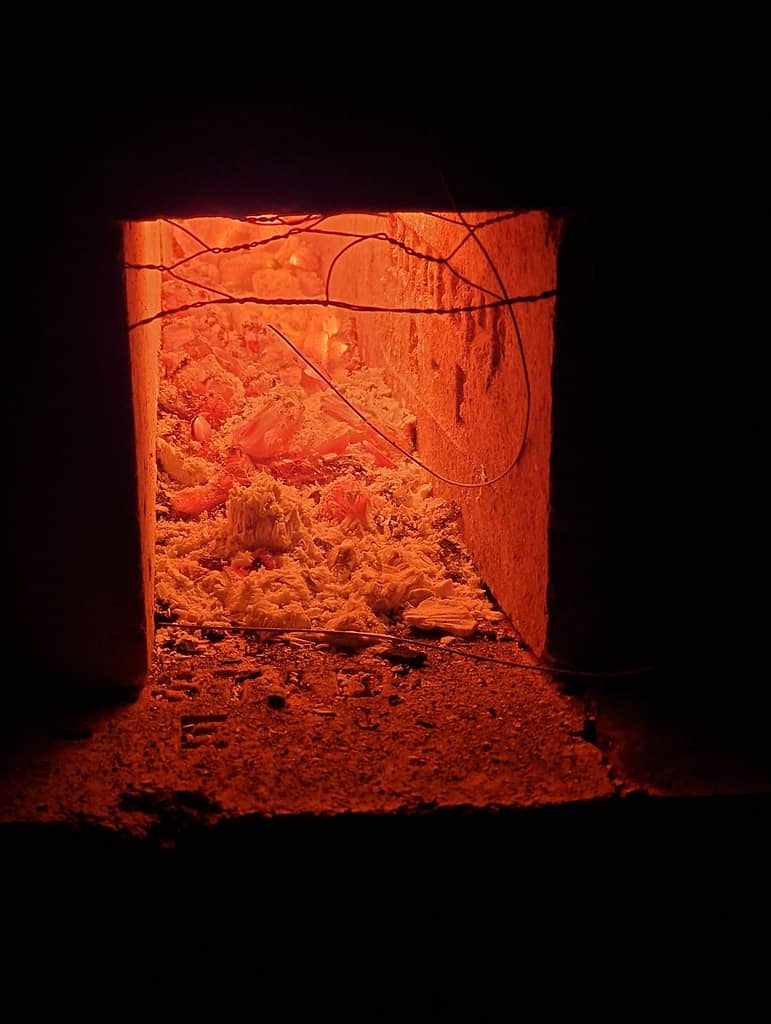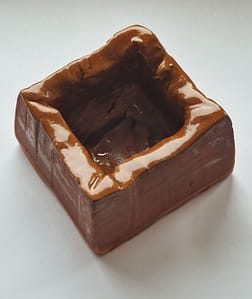
What is a low temperature ceramic glaze?
Modern ceramics usually burn in a temperature span between 1000℃ to 1300℃, and these glazes are divided into; low temperature glazes – mid temperature glazes – and high temperature glazes. Primitive firing and special projects can work in lower temperature zones between 600 – 1000℃, and some ceramists even burn as high as 1500℃.
(Scroll down for receipts)
All glazes on this page are low-temperature, also called low-fire glazes. More specific: They are tested and developed for a short firing range (6-14 hours), burned up to Cone 05 (Cone 05 = 1004℃), here the temperature is held for 30 minutes before the kiln is locked and the firing is finished. The glazes are all tested for wood-firing, but temperature vise there is no difference between an electric kiln, so yes these glazes should work in many types of kilns.
Low Temperature Ceramic Glaze

There exists a lot of greate low-fired glazes out there, developed by other ceramists, but here I wanted to make some from scratch myself. I share my experiments as I go. It’s a work in progress, and I’ll be the first to admit I don’t have hundreds of cool glazes at the moment. But things go the right way, and I hope spring / summer / autumn in 2024 gives a lot new glazes.
These glazes do not contain raw-materials that make them unhealthy to serve food on, but remember bacteria can grow in cracks in the glaze, or develop on matt and rough surfaces. So foodsafe is about more than just what materials are mixed together in the glaze.
For now, I am experimenting with glazes for sculptural purposes, some can be used for food-wares as-is, but I will test and add more food-safe glazes for pottery as time goes on.
With Low Temperature Ceramic Glaze I mean Cone 05 = 1004℃, that’s my goal. Most of these glazes can handle a higher span in temperature.
White glazes:
White glossy flakes
White Thin glaze - Almost Like a Wash
Bone White
Best White Low-Fire Glaze for Terracotta
Washes:
Wood Ash Glaze
Brown-red Thin Wash
Black Thin Wash
Warm Semi Matt Wash
Food-safe glazes:
Read more about what makes a food-safe glaze
Green-Black Glossy Glaze
Frosty Glossy Thick Glaze
Thin Glossy Glaze
Hippie Read-Brown
Sculptural glazes:
Crackle Glaze
Green Crackled Glaze
Dry yellow gray
Matte Metallic Gray
Low Temperature Ceramic Glaze – It’s always handy to understand the basics of glazes. Understand the difference between the melting agent (the flux), the glass-former, the stabilizer, and the fun part; the colors. Are core know-how, and handy when you have the “perfect” glaze, but it needs just a little adjustment.
Read more here:
Since I haven’t developed too many low temperature ceramic glazes yet, I add som links below. There are thousands of beautiful low-fire glazes that fit well for wood-firing, here are a few of my favorite sites:
https://www.lindaarbuckle.com/handouts/lowfire-glaze-recipes.htm#glz0014
https://www.alfredgrindingroom.com/recipes
https://www.priscillahollingsworth.com/uploads/4/9/8/3/4983085/lowfire_glaze_list.pdf
The low-fire glaze scale:
013 – 807 ℃
012 – 843℃
011 – 857℃
010 – 891℃
09 – 907℃
08 – 922℃
07 – 962℃
06 – 981℃
05 – 1004℃
04 – 1021℃
03 – 1046℃
02 – 1071℃
01 – 1078℃
1 – 1109℃
It’s not for sale yet, but it’s coming soon. This is a book I really looking forward to read, Let’s hope it lives up to the expectations… (no affiliate links)
Low Temperature Ceramic Glaze



















